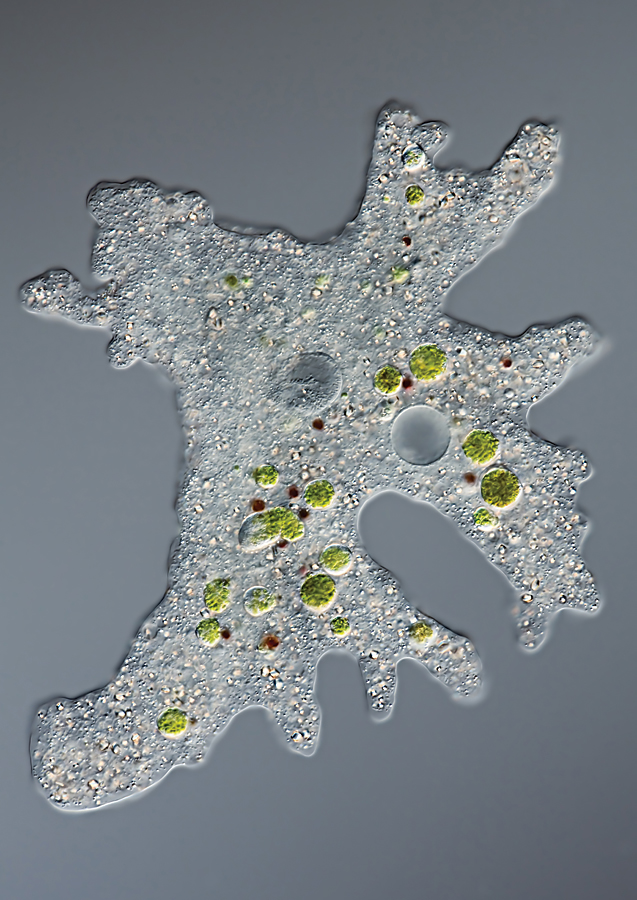Ameba, << uh MEE buh, >> also spelled amoeba, is a tiny, one-celled organism that usually can only be seen under a microscope. Amebas vary in size from about 1/100 inch (0.25 millimeter) to 1/10 inch (2.5 millimeters) across. Some amebas live in water and moist soil. Others live in the bodies of animals and human beings.

Only one cell makes up the ameba’s whole body. The cell contains a nucleus, the structure that directs the cell’s activities, and the cytoplasm, jellylike material around the nucleus. A thin, elastic membrane surrounds the cytoplasm and nucleus and holds them together. Water and gases pass in and out of the ameba through the membrane.
To move about, an ameba must change its body shape. The cytoplasm pushes out the membrane to form a fingerlike pseudopod (false foot), and all of the cytoplasm seems to flow into it. For every “step,” another pseudopod must form. Cells that move in this way are called ameboid cells. The white blood cells of human beings are ameboid cells.
Amebas eat tiny living organisms and particles of dead and decaying matter. They engulf their food by slowly wrapping pseudopods around a food particle. In this way, the food gets inside the cell. The section of the cell that contains the food is called a food vacuole. It floats in the cytoplasm until the food is digested. All undigested food passes out of the cell as the ameba slowly moves away. Amebas in fresh water must control water taken into their bodies or they will burst. They have a contractile vacuole to collect the extra water that builds up in the cell. When the contractile vacuole is filled, it empties through the cell membrane.
Amebas reproduce by fission (splitting apart) when they reach a certain size. The nucleus divides first. Then the rest of the body divides. The division results in two daughter cells, which can also grow, feed, and divide.
Most amebas are harmless to people. But one type causes a serious ailment called amebic dysentery when it gets into the large intestine.
See also Protoplasm; Protozoan.
